Tom O’Neill farms just outside of Castletownroche in north Cork. He is a participant in GLAS and was therefore eligible to apply to the Heritage Council for the Traditional Farm Buildings Grant (TFBG), funded by the Department of Agriculture, to repair an old stone building in the farmyard.
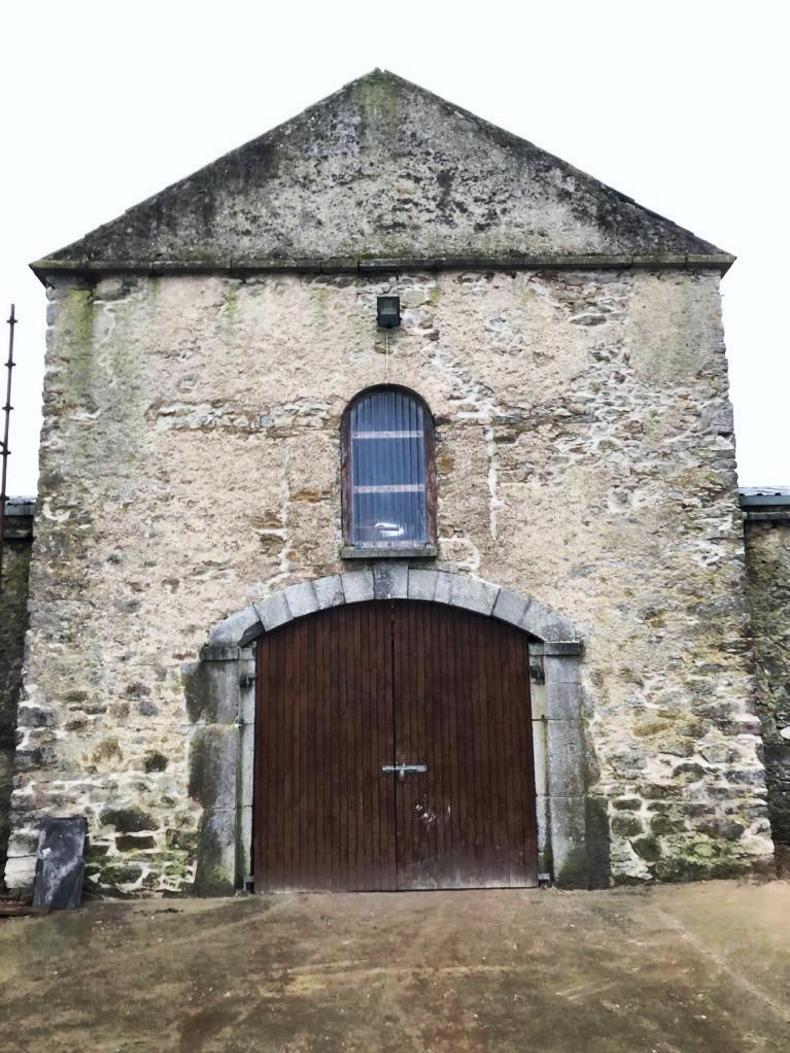
Project 1: The tower section required remedial work to the stonework and the lft section.
The building was built in the 1740s and forms part of an old courtyard complex, which is present on the 6in historic maps. Two of the buildings within the farmyard complex are recorded on the National Inventory of Architectural Heritage and on the SMR maps in Cork.
The farm is also within close proximity to Blackwater Castle, so the area is rich in history. The essential repairs required included repairing slate roofing and some timber latts. The walls of the main tower section also needed to be repaired.
Tom applied for the grant for restoration of old farm buildings, which is only available to farmers in the GLAS scheme, and got through the first stage of the grant application process.

The loft section on the farm of Tom O'Neill utilised existing timber of sound integrity.
Once he had secured full grant approval, the next step was to carry out a bat and bird survey.
No bats or other wildlife were present in the building, which allowed work to start during the summer months.
With the expertise of Chris Southgate, a local conservation consultant based in Midleton, a method statement was prepared and local conservation builder Connor Hannon from Doneraile was secured to carry out structural repairs.
“An imperative part of the Heritage Council grant is to promote repair rather than replacement,” says Anna Meenan, project manager, GLAS traditional farm buildings grant scheme at the Heritage Council.
“So, whenever possible, building materials are reused.”
In the case of the O’Neill project, slates were reused in the repair of the roof where possible and timbers deemed to be of sound integrity were also used for the repair of the loft in the tower section.
All waste material was disposed of in an environmentally sustainable manner.

Project 2: The finished building on John and Margaret Leahy's farm.
John and Margaret Murphy are farming on the Cork side of the village of Rathmore on the Cork-Kerry border. They are currently participants in GLAS and therefore were eligible to apply for TFBG funding for a barn that had fallen into a state of disrepair.
The main body of work required was repairs to the roof. Some repointing of stonework was also carried out.
A bat and bird survey was completed by a local ecologist, but no bats or birds were present in the building, so work was allowed to proceed during the summer months.
Much of the roof timber had to be replaced, while new sheeting was also applied.
The pointing of the stonework has reinforced the walls and other aspects around the farmyard, such as doors, windows and fantastic wrought iron gates were also repaired and painted.

Project 2: The roof of the building required significant work.
The repaired building is a fantastic addition to the visual heritage of the area and adds greatly to the local landscape.
The Murphy family really appreciates the funding, as without it, such repairs would not be possible, leading to a great loss of our valued heritage and a link to the past that is irreplaceable.

The starting point on John and Margaret Leahy's farm.
The value of buildings like the one on the Murphy farm is priceless in terms of the history and heritage value it holds.

Project 3: The freshly pointed stone work has increased the strength of the building.
Kevin Wood is farming just outside of the suburb of Ballincollig, west of Cork city. The family farm is situated along the banks of the River Lee, close to the popular local amenity of Ballincollig Park, where the historic gun powder mills are located.
These date back to the 1790s and are a popular local historical attraction.
The farm itself once formed part of Templehill House Estate, which dates back to the 1800s.
There is a lot of history attached to this area and it highlights the importance of retaining as many of these traditional farm buildings as we can to hold on to and safeguard our heritage.
The main farm building that required repairs was a fantastic lofted building which was used as a grain store.

Project 3: The loft of the building required significant repair.
This building is present on the historic maps dating back to 1888. The main work required in this building was repairing the loft, along with some repointing of stonework. A small adjoining stone building also required repairs to the corrugated roof. As much as possible, original building materials were reused by local builder Pat Shanahan.
Kevin and his family are very grateful to the Heritage Council (Anna Meenan) and the Department of Agriculture for the funding they received to complete these repair works.

Project 4: The stone work required quite a bit of remedial attention in places.
Siobhan Madden, Tulladuff, Liscarroll, Co Cork, is a GLAS 3 participant and is very pleased to have received funding for repairs to adjoining 200-year-old buildings.
The limestone buildings dating from 1820-1830 were constructed with stone from a quarry on the farm. Incidentally, the building of local churches in the parish, Liscarroll and Churchtown, benefited from similar stone in the quarry.
The buildings comprise of a barn, loft (formerly grain store), tack room, feed house and two stables. The buildings in question had been very well maintained over the years and were generally in good working condition.
However, the scheme allowed for deep structural pointing in lime mortar to be carried out on the front and rear of the upper building, which had raised stonework carried out in 1900-1910 to the level of the slated building.
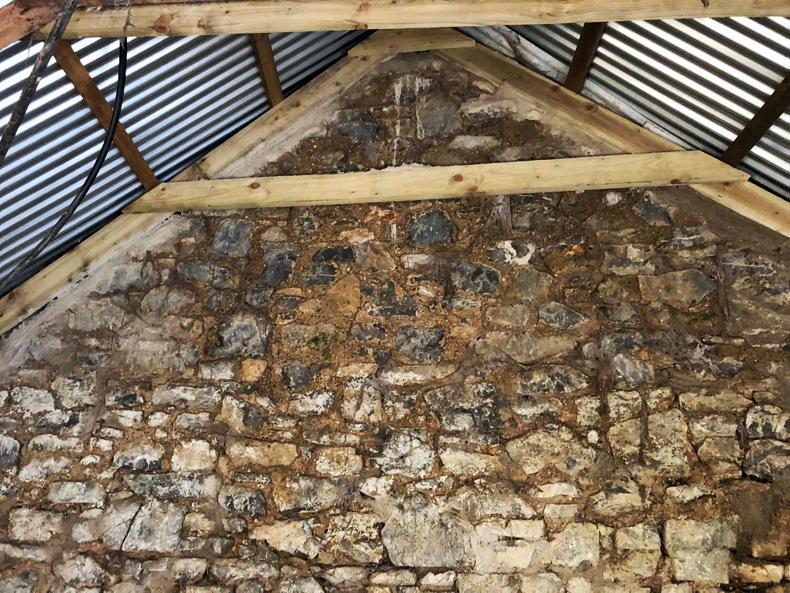
Project 4: An internal view of the repaired roof timbers and repointed stonework.
Masonry has been built up above the doorways/lintels. A stone facade was installed using matching stone and a suitable NHL 3.5 mortar. The use of NHL 3.5 lime mortar was an excellent match and a weak lime mix of NHL 2 in the case of selected areas of patch-pointing. Graded and washed sharp sand was used throughout.
The upper building benefited from intensive roof repairs, however the slate roof on the adjoining lower building required minimum intervention – approximately 20 salvaged slates were required to match the colour, gauge and size. These slates had, in a former life, been used in a roof in UCC and were sourced by the contractor Conor Kelleher.
The unique arches, of which there are three, are great features on the buildings and can be viewed from the roadway. The arches did not require any remedial works and are in excellent condition, both inside and outside, which further compliments the skill of the masons and labourers involved in the initial construction of these buildings.
The lower gable, which is west-facing, required the verges to be reinforced with lead soakers. Remedial works had been undertaken to this gable in 1980. A lime render was applied to a section of the rear of the lower building, in an area that had been previously built up in concrete blockwork. This lime render masks the concrete blocks and adds a traditional feature to the building.
Siobhan Madden employed the services of Southgate Associates, Heritage Conservation Specialists based in Midleton, Co Cork, to supervise the project from start to finish. Conor Kelleher Ltd, Dripsey, Co Cork, was the chosen contractor for the project.
Funding by way of TFBG was acknowledged by the participant and was the deciding factor in the commencement of the project.
In addition, Teagasc advisers Enda Maloney, Kanturk, and Eimear Connery, Midleton, played key roles with the initial information of TFBG and for the encouragement to submit an application. The historic buildings blend in well in this community, as this is a good, fertile limestone region well known for the raising of thoroughbred horses.
The Madden family have been breeding and raising thoroughbred horses for generations, enjoying notable success at Cheltenham, Aintree, Punchestown, etc.
The Heritage Council administers the GLAS TFBG for the conservation and repair of traditional farm buildings and other related structures on behalf of the Department of Agriculture.
Grants awarded will not exceed 75% of the cost of the project, with a maximum grant of €25,000 and a minimum grant of €4,000.
The aim of the grant is to restore these buildings to be structurally sound with minimum intervention.
Grants will also be available for other related structures, such as historic yard surfaces and landscape features around the farmyard including walls, gate pillars and gates.
To be eligible for the scheme, buildings and other related structures (constructed before 1960) must have architectural or vernacular heritage character, make a contribution to their setting and not be overwhelmed by large-scale modern buildings.
Tom O’Neill farms just outside of Castletownroche in north Cork. He is a participant in GLAS and was therefore eligible to apply to the Heritage Council for the Traditional Farm Buildings Grant (TFBG), funded by the Department of Agriculture, to repair an old stone building in the farmyard.

Project 1: The tower section required remedial work to the stonework and the lft section.
The building was built in the 1740s and forms part of an old courtyard complex, which is present on the 6in historic maps. Two of the buildings within the farmyard complex are recorded on the National Inventory of Architectural Heritage and on the SMR maps in Cork.
The farm is also within close proximity to Blackwater Castle, so the area is rich in history. The essential repairs required included repairing slate roofing and some timber latts. The walls of the main tower section also needed to be repaired.
Tom applied for the grant for restoration of old farm buildings, which is only available to farmers in the GLAS scheme, and got through the first stage of the grant application process.

The loft section on the farm of Tom O'Neill utilised existing timber of sound integrity.
Once he had secured full grant approval, the next step was to carry out a bat and bird survey.
No bats or other wildlife were present in the building, which allowed work to start during the summer months.
With the expertise of Chris Southgate, a local conservation consultant based in Midleton, a method statement was prepared and local conservation builder Connor Hannon from Doneraile was secured to carry out structural repairs.
“An imperative part of the Heritage Council grant is to promote repair rather than replacement,” says Anna Meenan, project manager, GLAS traditional farm buildings grant scheme at the Heritage Council.
“So, whenever possible, building materials are reused.”
In the case of the O’Neill project, slates were reused in the repair of the roof where possible and timbers deemed to be of sound integrity were also used for the repair of the loft in the tower section.
All waste material was disposed of in an environmentally sustainable manner.

Project 2: The finished building on John and Margaret Leahy's farm.
John and Margaret Murphy are farming on the Cork side of the village of Rathmore on the Cork-Kerry border. They are currently participants in GLAS and therefore were eligible to apply for TFBG funding for a barn that had fallen into a state of disrepair.
The main body of work required was repairs to the roof. Some repointing of stonework was also carried out.
A bat and bird survey was completed by a local ecologist, but no bats or birds were present in the building, so work was allowed to proceed during the summer months.
Much of the roof timber had to be replaced, while new sheeting was also applied.
The pointing of the stonework has reinforced the walls and other aspects around the farmyard, such as doors, windows and fantastic wrought iron gates were also repaired and painted.

Project 2: The roof of the building required significant work.
The repaired building is a fantastic addition to the visual heritage of the area and adds greatly to the local landscape.
The Murphy family really appreciates the funding, as without it, such repairs would not be possible, leading to a great loss of our valued heritage and a link to the past that is irreplaceable.

The starting point on John and Margaret Leahy's farm.
The value of buildings like the one on the Murphy farm is priceless in terms of the history and heritage value it holds.

Project 3: The freshly pointed stone work has increased the strength of the building.
Kevin Wood is farming just outside of the suburb of Ballincollig, west of Cork city. The family farm is situated along the banks of the River Lee, close to the popular local amenity of Ballincollig Park, where the historic gun powder mills are located.
These date back to the 1790s and are a popular local historical attraction.
The farm itself once formed part of Templehill House Estate, which dates back to the 1800s.
There is a lot of history attached to this area and it highlights the importance of retaining as many of these traditional farm buildings as we can to hold on to and safeguard our heritage.
The main farm building that required repairs was a fantastic lofted building which was used as a grain store.

Project 3: The loft of the building required significant repair.
This building is present on the historic maps dating back to 1888. The main work required in this building was repairing the loft, along with some repointing of stonework. A small adjoining stone building also required repairs to the corrugated roof. As much as possible, original building materials were reused by local builder Pat Shanahan.
Kevin and his family are very grateful to the Heritage Council (Anna Meenan) and the Department of Agriculture for the funding they received to complete these repair works.

Project 4: The stone work required quite a bit of remedial attention in places.
Siobhan Madden, Tulladuff, Liscarroll, Co Cork, is a GLAS 3 participant and is very pleased to have received funding for repairs to adjoining 200-year-old buildings.
The limestone buildings dating from 1820-1830 were constructed with stone from a quarry on the farm. Incidentally, the building of local churches in the parish, Liscarroll and Churchtown, benefited from similar stone in the quarry.
The buildings comprise of a barn, loft (formerly grain store), tack room, feed house and two stables. The buildings in question had been very well maintained over the years and were generally in good working condition.
However, the scheme allowed for deep structural pointing in lime mortar to be carried out on the front and rear of the upper building, which had raised stonework carried out in 1900-1910 to the level of the slated building.

Project 4: An internal view of the repaired roof timbers and repointed stonework.
Masonry has been built up above the doorways/lintels. A stone facade was installed using matching stone and a suitable NHL 3.5 mortar. The use of NHL 3.5 lime mortar was an excellent match and a weak lime mix of NHL 2 in the case of selected areas of patch-pointing. Graded and washed sharp sand was used throughout.
The upper building benefited from intensive roof repairs, however the slate roof on the adjoining lower building required minimum intervention – approximately 20 salvaged slates were required to match the colour, gauge and size. These slates had, in a former life, been used in a roof in UCC and were sourced by the contractor Conor Kelleher.
The unique arches, of which there are three, are great features on the buildings and can be viewed from the roadway. The arches did not require any remedial works and are in excellent condition, both inside and outside, which further compliments the skill of the masons and labourers involved in the initial construction of these buildings.
The lower gable, which is west-facing, required the verges to be reinforced with lead soakers. Remedial works had been undertaken to this gable in 1980. A lime render was applied to a section of the rear of the lower building, in an area that had been previously built up in concrete blockwork. This lime render masks the concrete blocks and adds a traditional feature to the building.
Siobhan Madden employed the services of Southgate Associates, Heritage Conservation Specialists based in Midleton, Co Cork, to supervise the project from start to finish. Conor Kelleher Ltd, Dripsey, Co Cork, was the chosen contractor for the project.
Funding by way of TFBG was acknowledged by the participant and was the deciding factor in the commencement of the project.
In addition, Teagasc advisers Enda Maloney, Kanturk, and Eimear Connery, Midleton, played key roles with the initial information of TFBG and for the encouragement to submit an application. The historic buildings blend in well in this community, as this is a good, fertile limestone region well known for the raising of thoroughbred horses.
The Madden family have been breeding and raising thoroughbred horses for generations, enjoying notable success at Cheltenham, Aintree, Punchestown, etc.
The Heritage Council administers the GLAS TFBG for the conservation and repair of traditional farm buildings and other related structures on behalf of the Department of Agriculture.
Grants awarded will not exceed 75% of the cost of the project, with a maximum grant of €25,000 and a minimum grant of €4,000.
The aim of the grant is to restore these buildings to be structurally sound with minimum intervention.
Grants will also be available for other related structures, such as historic yard surfaces and landscape features around the farmyard including walls, gate pillars and gates.
To be eligible for the scheme, buildings and other related structures (constructed before 1960) must have architectural or vernacular heritage character, make a contribution to their setting and not be overwhelmed by large-scale modern buildings.













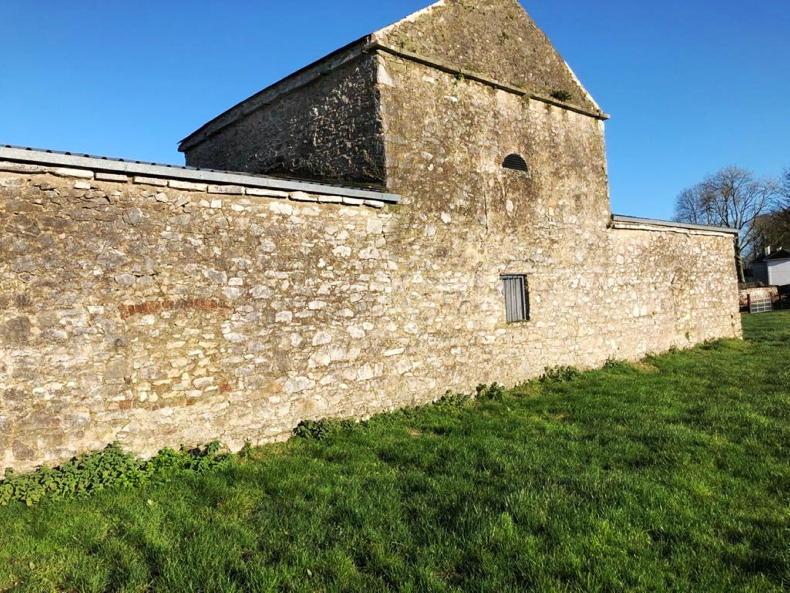
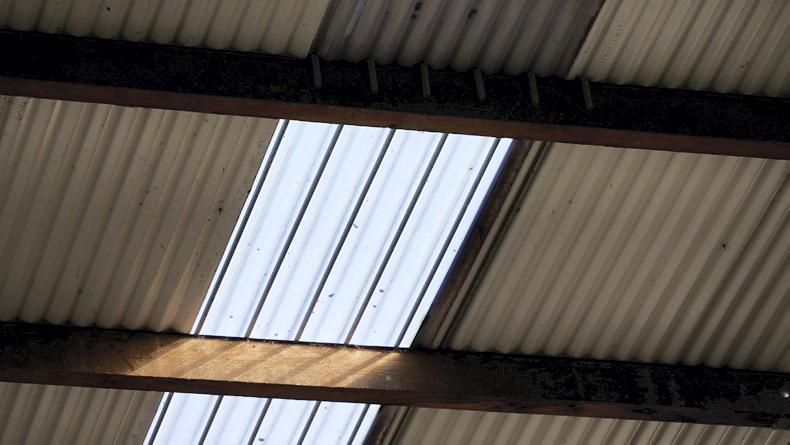
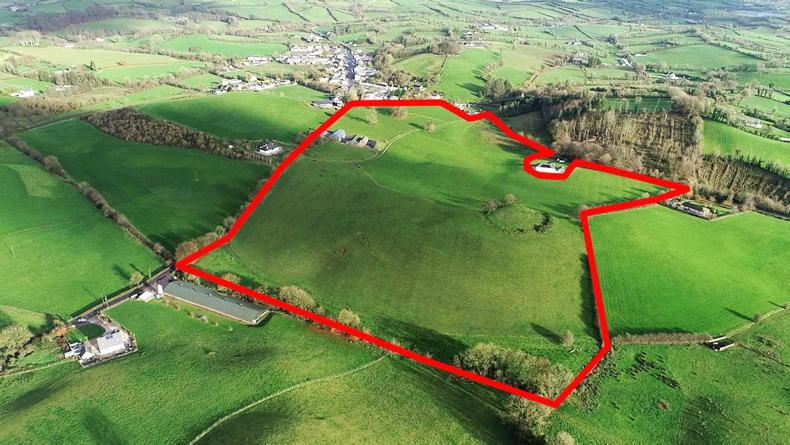
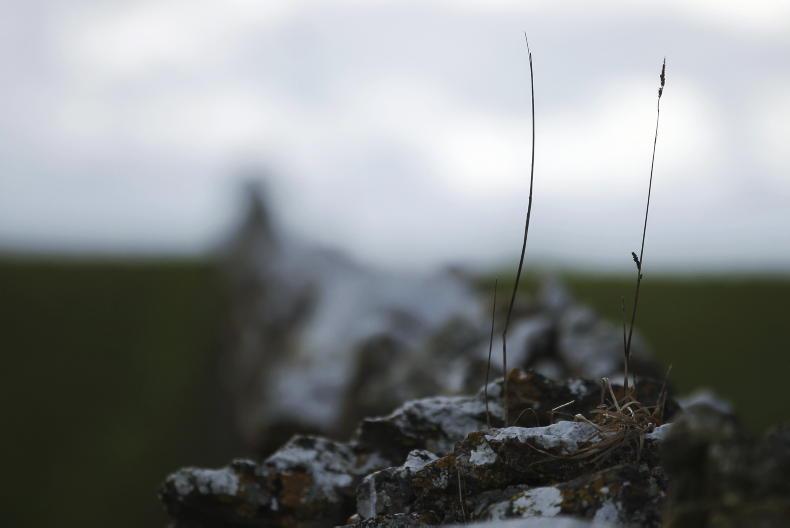

SHARING OPTIONS